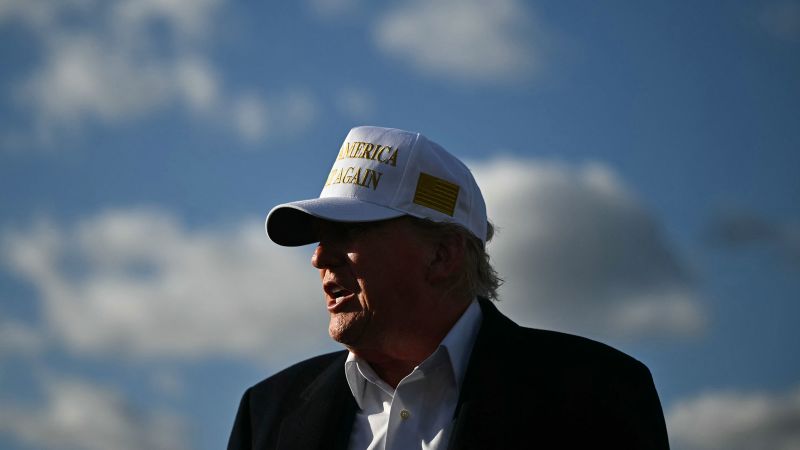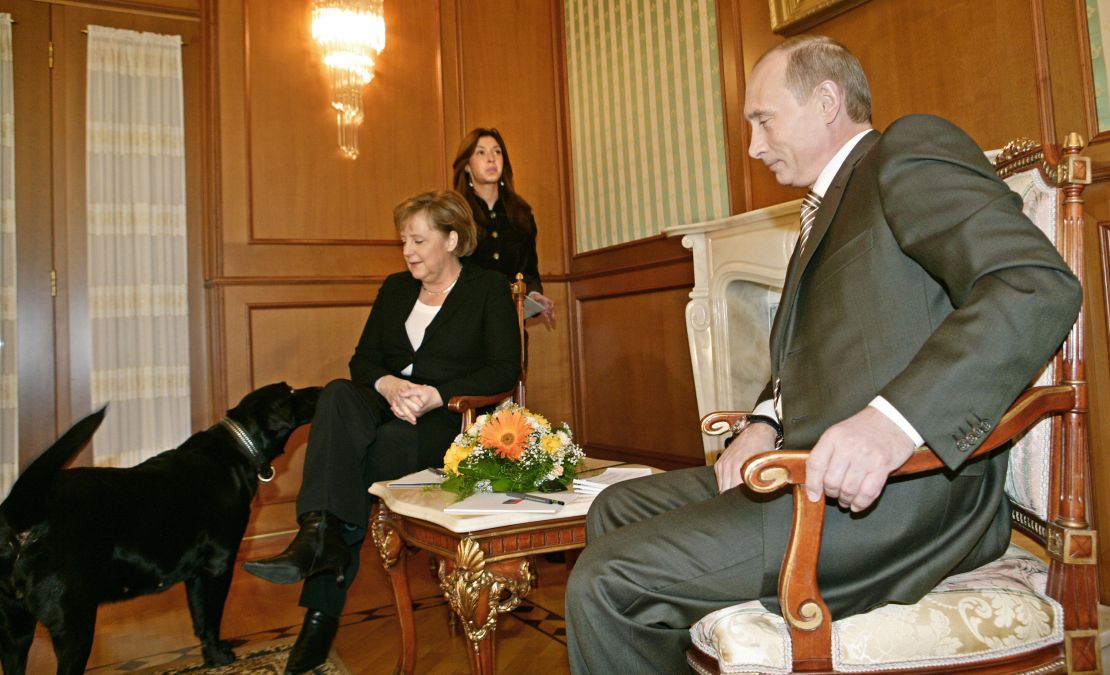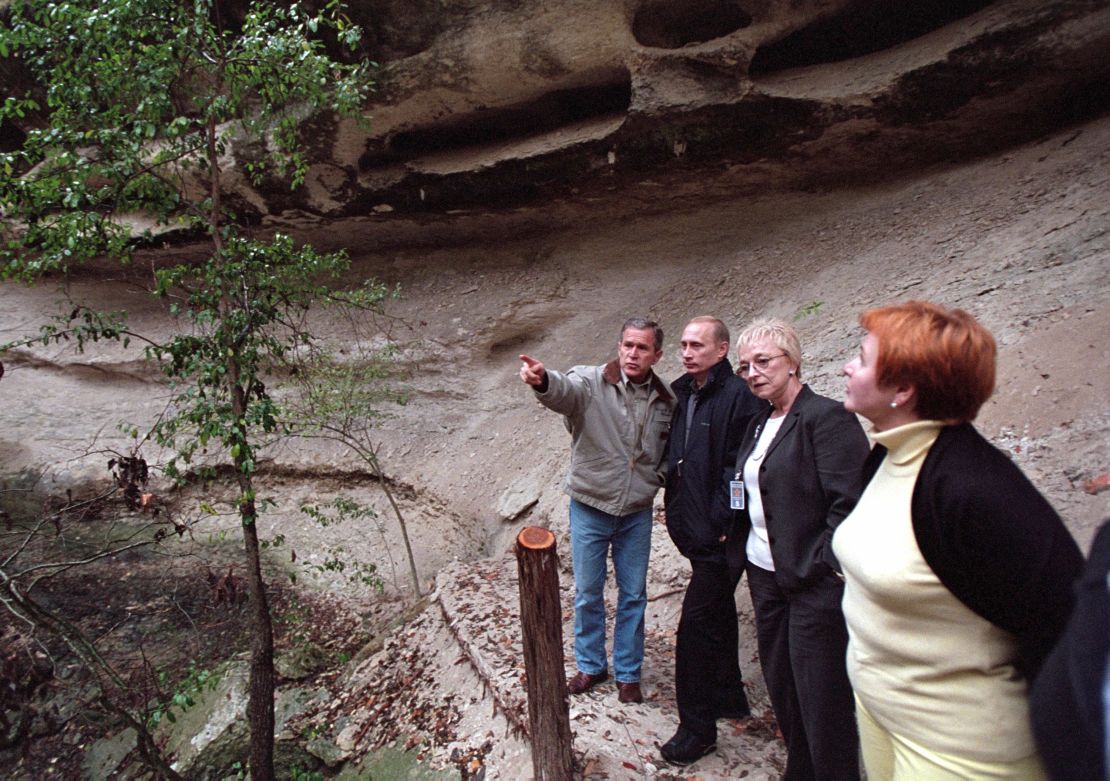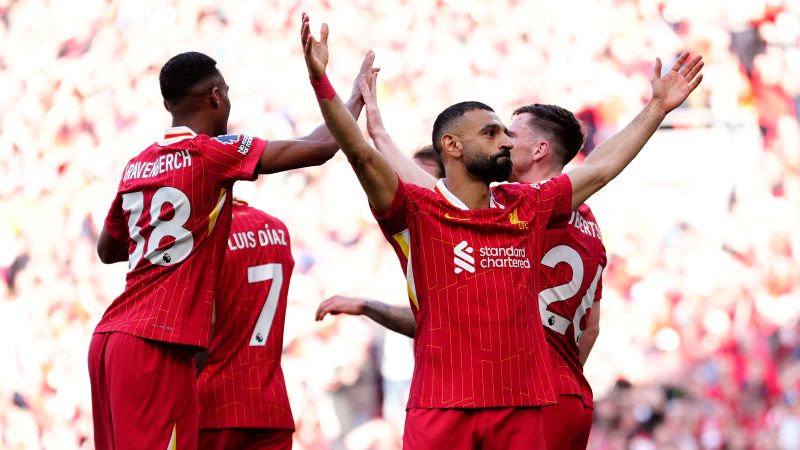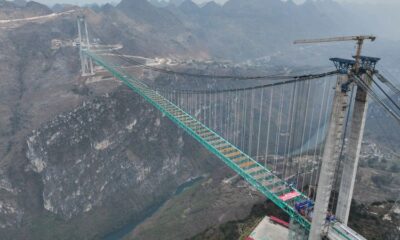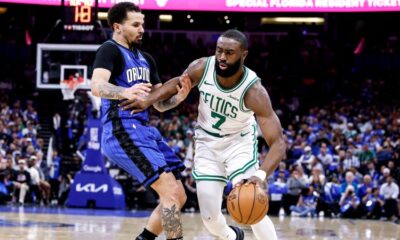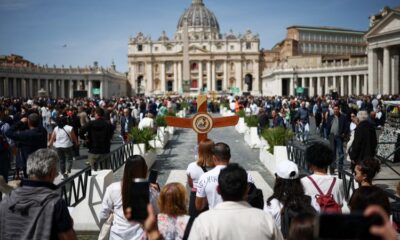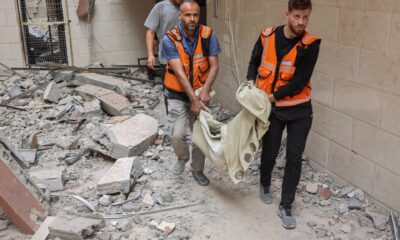Vatican City
CNN
—
The bells of St. Peter’s Basilica tolled to mark the end of the funeral of Pope Francis in Vatican City, where tens of thousands of mourners gathered to give a final send-off to a pontiff who was celebrated during the service as a champion of migrants and the poor.
His funeral Mass was held on the steps of the basilica, one of the Catholic Church’s most important sites, with more than 50 world leaders and 11 reigning monarchs in attendance. They included US President Donald Trump, and former President Joe Biden, Argentine President Javier Milei, Italian Prime Minister Giorgia Meloni and Philippine President Ferdinand Marcos Jr., head of the largest Catholic nation in Asia. Ukraine’s President Volodymyr Zelensky also attended and met with Trump before the funeral.
The crowds that flocked to St. Peter’s Square for the Mass watched mostly in silence, breaking it only to sing and follow along with prayers, and to applaud when they saw Francis’ coffin.
The modest coffin was carried back into the basilica for a final time at the end of the roughly two-hour-long service, which saw him praised as a “pope among the people.” It was then taken in procession across the River Tiber to the Basilica di Santa Maria Maggiore for burial, passing Rome’s ancient Colosseum on the way.
“I loved him from the very first moment, because he was human, with such an open heart,” said Anita Althaus, from Germany, just as the funeral Mass ended. She’d driven overnight to make it in time. “He had love always.”
More than 250,000 people participated in the service in St. Peter’s Square, according to the Vatican. About 150,000 more lined the 6-kilometer (3.7-mile) procession route from Vatican City through Rome to his final resting place.
Many more of the world’s 1.4 billion Catholics watched the funeral for the first Latin American pope on TV.
Pope Francis died at the age of 88 after suffering a stroke on Easter Monday, just one day after he appeared in the same square to offer a blessing to the faithful at the high point of the Christian calendar.
In the days that followed, about 250,000 mourners came to pay their final respects as his body lay in state inside St. Peter’s Basilica. His coffin was officially sealed on Friday night in a liturgical rite led by the Cardinal Camerlengo Kevin Farrell, the acting head of the church.
As sunlight gleamed off the massive travertine columns of St. Peter’s Square on Saturday morning, the funeral Mass opened with the chant, sung in Latin: “Eternal rest grant unto him, O Lord, and let perpetual light shine upon him.”
Giving the homily, Italian Cardinal Giovanni Battista Re, the dean of the College of Cardinals, said Francis’ “gestures and exhortations in favour of refugees and displaced persons are countless. His insistence on working on behalf of the poor was constant.”
The cardinal continued that, during his time as head of the Church, the pope had faced “raging wars, with their inhumane horrors” and had “incessantly raised his voice imploring peace… and inviting honest negotiation to find possible solutions.” He recalled that “build bridges, not walls” was an exhortation Francis repeated many times.
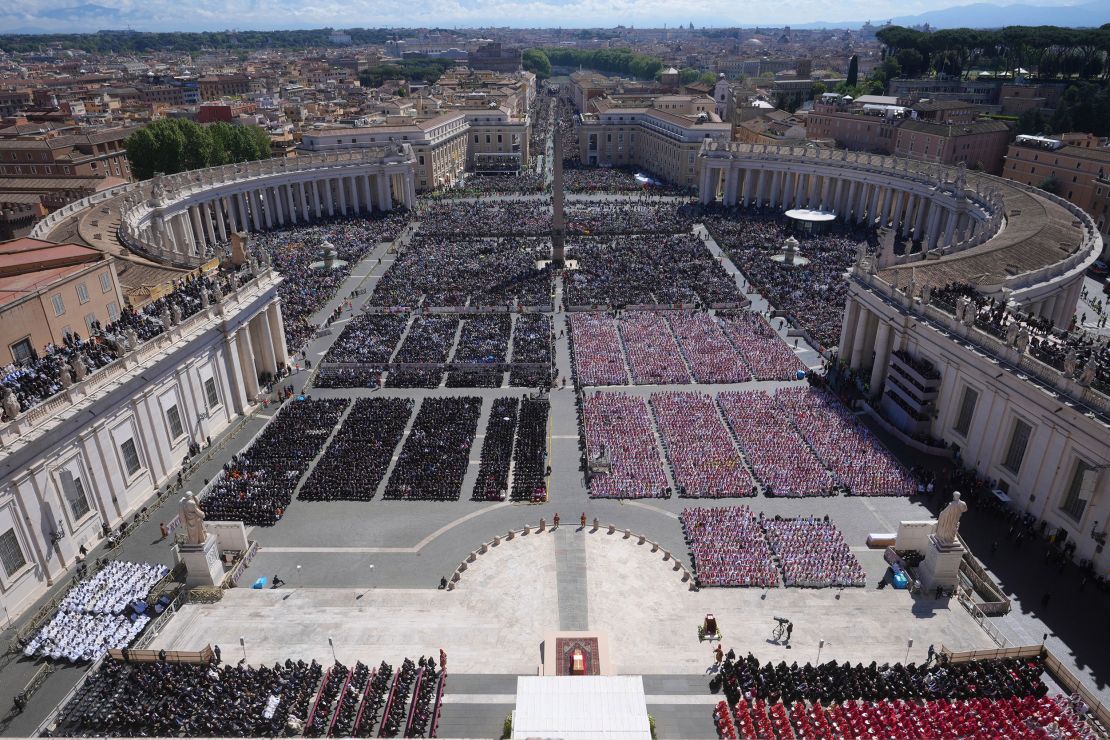
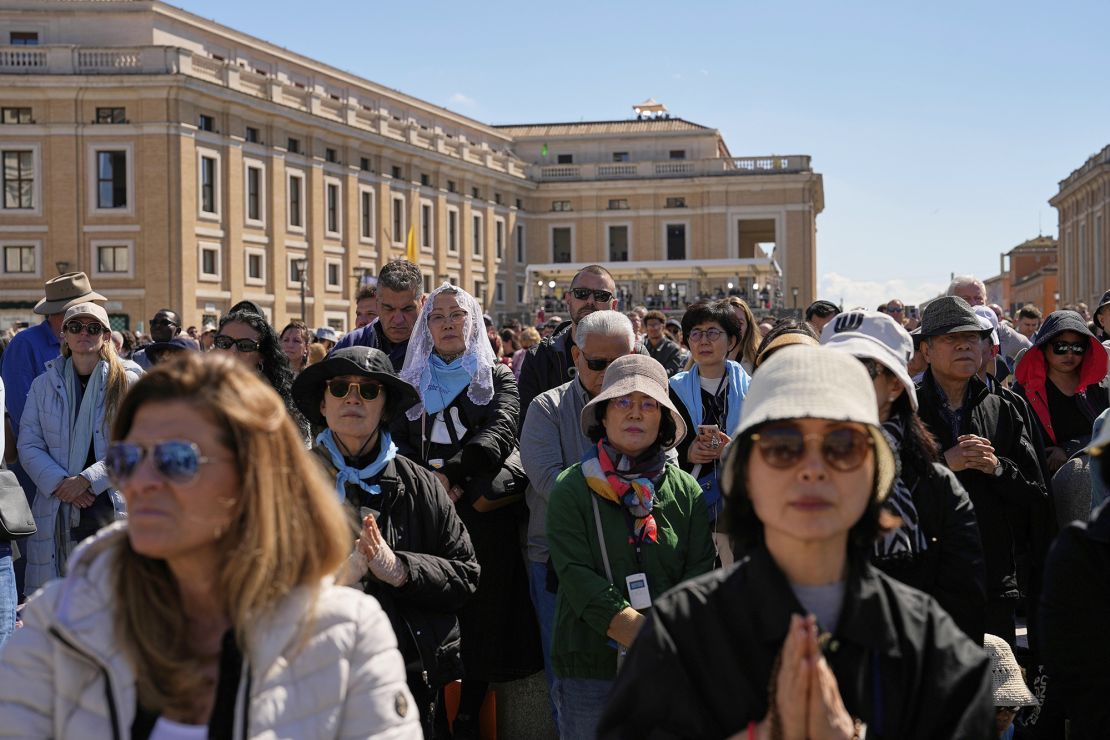
Cardinals also delivered a short prayer in multiple other languages, including French, Arabic, Portuguese, Polish, German and, for the first time, Mandarin, fitting for a pope who sought to reach out to followers in all parts of the globe.
In keeping with tradition, Holy Communion was distributed first among the cardinals and then among the crowd in the square. The mood became uplifting as people turned to one another to offer handshakes of peace, and crowds moved out of the way to let others pass for communion.
Francis approved the order of the day back in June 2024. Some elements were pared back, as he had sought to “simplify and adapt” proceedings, so that the papal funeral is “that of a pastor and disciple of Christ, and not of a powerful person in this world,” according to Vatican officials.
Francis, who chose his name in honor of St. Francis of Assisi, with his commitment to poverty, peace and nature, also wanted to reflect his own dedication to the homeless and disadvantaged in the day’s events.
He believed “the poor have a privileged place in the heart of God,” a Holy See statement said. “For this reason, a group of poor and needy people will be present on the steps leading to the papal Basilica di Santa Maria Maggiore to pay their last respects to Pope Francis before the burial of his coffin.”
At his “insistence,” groups of people Francis felt were marginalized were also invited to watch the service in St. Peter’s Square. Those involved were chosen by the charity Sant’Egidio, and they included the homeless, migrants, the impoverished and a group of transgender women who live in a convent in Rome.
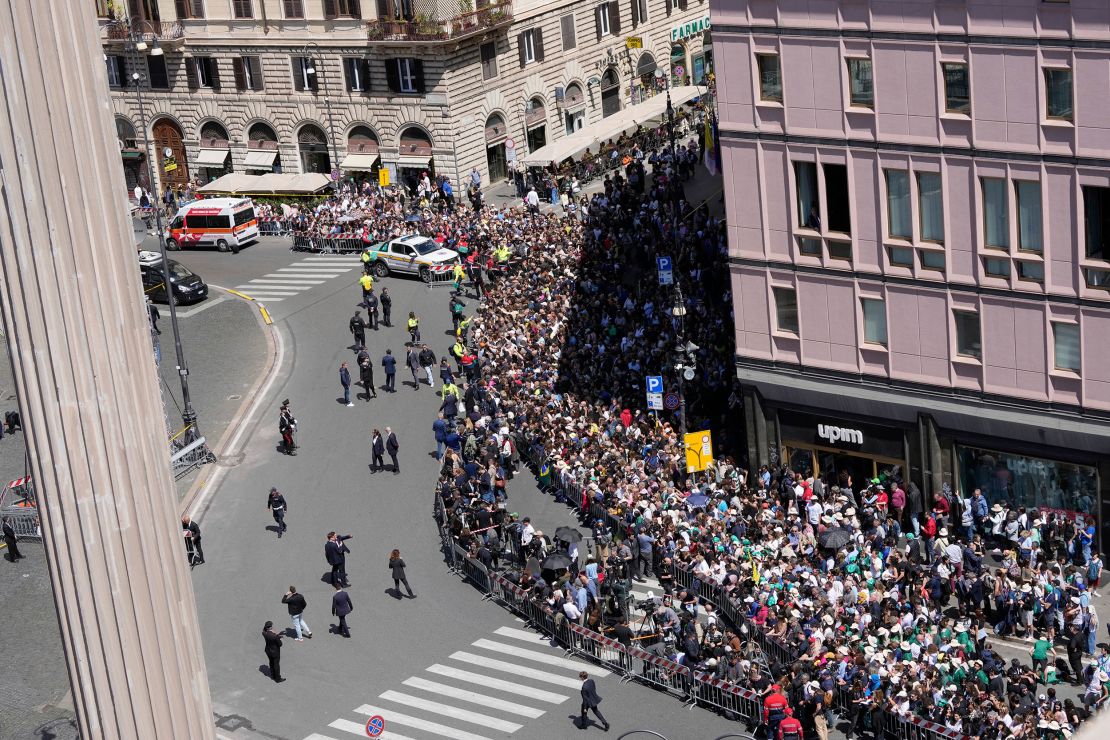
Francis will be the first pope in more than three centuries to be buried at Santa Maria Maggiore, with the interment taking place away from the public eye.
Sister Evelyn told CNN she chose to come to Santa Maria Maggiore on Saturday instead of the Vatican because the pope’s real work was among the people.
“I work in the periphery and when Pope Francis recognized us, we felt heard,” she said of his recognition of the African church. “We are seen. Will the new pope still see us? That question will come after today.”
Francis was a pope of many firsts – the first Latin American pontiff, the first of the Jesuit order and the first modern-day pope born outside of Europe.
Elected in 2013 as an outsider candidate from Argentina, Francis went on to usher in progressive reforms, including the promotion of women’s roles in the church.
But his 12-year leadership was not without criticism. He took some important steps to address the Catholic Church’s clerical sexual abuse scandals, but campaigners and survivors say there is still much more to do.
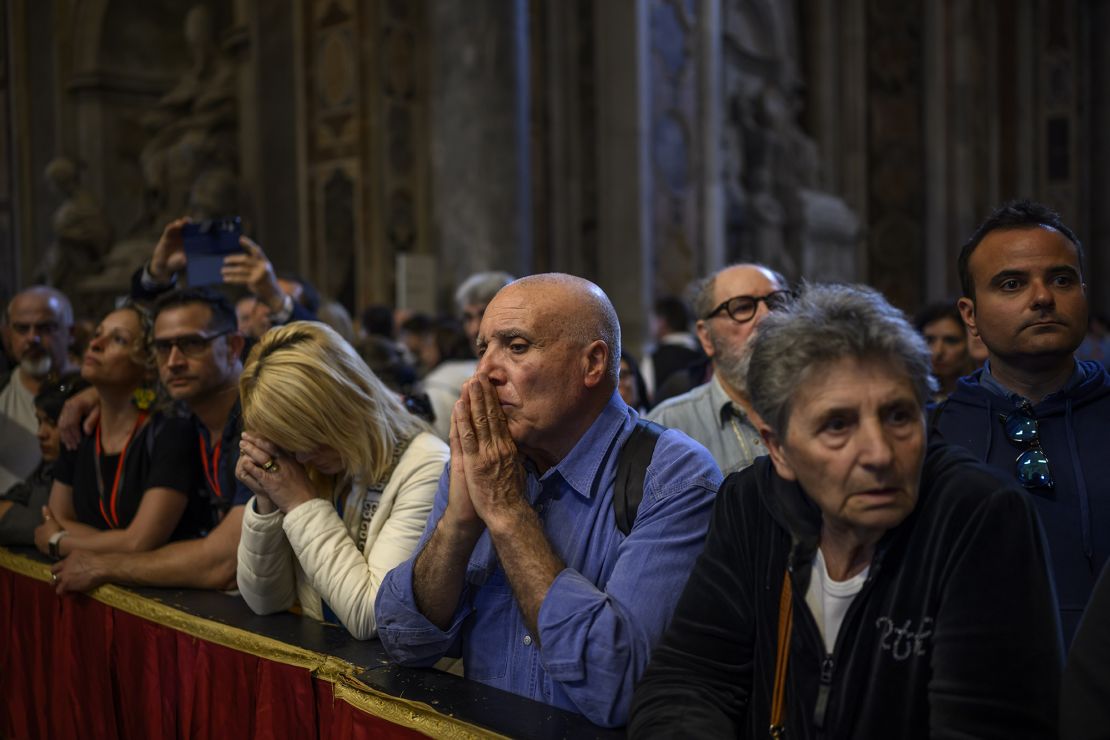
Divisions within the Church over same-sex relationships also persisted throughout his papacy. When asked about his position on sexual orientation, the pope famously said, “Who am I to judge?” He went on to authorize the blessings of same-sex couples, although he did not formally change the Church’s doctrine.
And his record was disparaged by some of the more conservative cardinals and members of the Church.
Francis issued a rebuke of the Trump administration’s immigration policy earlier this year, and criticized Vice President JD Vance’s use of theology to defend its approach. Vance was one of the last people to meet with the pope, in a brief encounter on Easter Sunday.
The next pope will be chosen by cardinals from around the world in conclave, a closed-door process that may see a battle play out between those who want to continue Pope Francis’ progressive path and those who want to reverse it.
Candela Rodríguez, a university exchange student studying in Rome but from Seville, Spain, told CNN she hoped the next pope would be “similar to Francisco and not extravagant. And close to the people, as he was.”
Pope Francis “did a good job of bringing religion closer to young people… he was very progressive and tried to make the Church closer to everyone,” the 21-year-old said, adding that she felt “very fortunate” to be in Rome for the funeral.
Catholics throughout the world have differing opinions, but many believers gathered in Vatican City this week told CNN that they are proud of Francis’ record.
“The pope did a lot to put marginalized people first,” said Federico Burlón, from Argentina, as he waited to enter the colonnade of St. Peter’s Square early on Saturday. “It’s very sad, but it’s a celebration of his life. And I hope the next pope will continue his way of turning the Church back to poor people.”
“He was a very simple man, who loved other people,” said Sister Luisa, a nun from Munich. “We feel very blessed, but also deep sorrow.”
CNN’s Sophie Tanno, Christopher Lamb, Antonia Mortensen, Barbie Latza Nadeau, Lauren Said-Moorhouse and James Frater contributed to this report.

